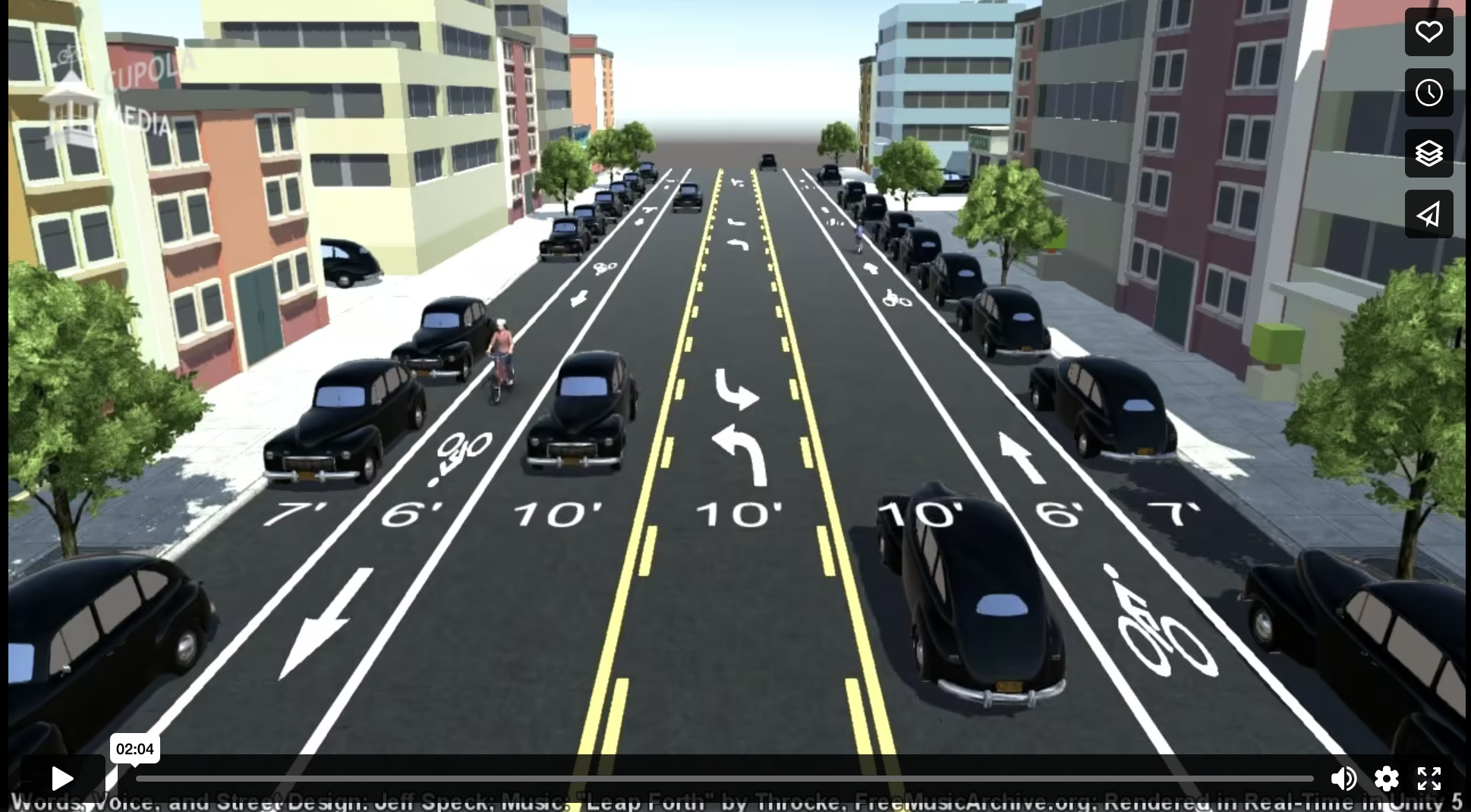Road Diets 101
Since you’re here reading this blog, there’s a good chance that you’ve already come across the term “road diet.” It is among the more self-explanatory transportation planning concepts, but what exactly is a Road Diet and how does it work?
A Road Diet, sometimes called a “roadway reconfiguration” or “rightsizing”, is a transportation design treatment that involves re-striping a stretch of a roadway to remove travel lanes and reallocate that space for other uses such as left turn lanes, bicycle lanes, sidewalks, pedestrian crossing islands, and landscaping. Road Diets can take different forms, but most commonly, they are used to convert a four-lane roadway (with two travel lanes in each direction) into a three-lane roadway, with one travel lane in each direction and a center lane for left turns.
A typical road diet that involves a four-lane to three-lane conversion (Source: U.S. Department of Transportation Federal Highway Administration)
U.S Department of Transportation Federal Highway Administration (FHWA) promotes Road Diets as a low-cost strategy that offer multiple safety benefits, essentially at the cost re-striping the street. According to FHWA, “in addition to low cost, the primary benefits of a Road Diet include enhanced safety, mobility and access for all road users and a ‘complete streets’ environment to accommodate a variety of transportation modes.” (Source: https://highways.dot.gov/safety/other/road-diets)
One of the most notable benefits of Road Diets is the reduction of the number and severity of vehicle-to-vehicle crashes. Studies have revealed a 19 to 47 percent reduction in overall crashes. Road Diets help accomplish this safety improvement by reducing conflict points between vehicles that contribute to crashes as well as reducing speeds and speed differentials between vehicles. Reduced speeds also decrease the severity of crashes when they do occur. According to the Tucson Department of Transportation and Mobility, here in Tucson, crashes on 36th Street fell by 70% after the roadway was converted from four lanes to three lanes.
Intersection conflicts before and after a Road Diet (Source: FHWA)
Mid block conflicts before and after a Road Diet (Source: FHWA)
Road Diets reduce vehicle-to-vehicle conflict points (shown as white diamonds) that contribute to rear-end, left-turn, and sideswipe crashes by removing lanes that serve both through and turning traffic. Left-turn lanes create an area where people can safely stop and wait for a gap in oncoming traffic.
In addition to the safety benefits above, according to the FHWA, road diets also have “operational” benefits such as reducing delays at signalized intersections by separating left-turning traffic from through traffic and facilitating more consistent traffic flow.
Furthermore, Road Diets improve safety and comfort for people walking by reducing the number of lanes and thereby shortening the time they’re exposed to moving traffic. They also create an opportunity for further improving pedestrian crossings by installing pedestrian crossing islands in the newly-created center turn lane. Additionally, reduced speeds enhance overall safety and comfort for people traveling on foot.
A pedestrian crossing island was added in the newly-created center turn lane after 36th Street received a Road Diet. The crossing is located at the intersection of Plumer Avenue which leads to Pueblo Gardens PreK-8 School.
Road Diets can improve bicycling through the addition of striped bike lanes or protected bike lanes where a physical barrier (posts, curbs, etc.) separates the adjacent vehicular lane from the bike lane depending on space available after the lane reconfiguration.
Road Diet implementation considerations include volume of daily traffic, crash history, vehicle speeds, number of lanes, bus stops and routes, among other factors. When the conditions are right, Road Diets are proven to be a highly effective and low-cost safety solution. Unlike more complex transportation planning that require major construction, Road Diets can be opportunistically implemented in conjunction with street repaving projects, increasing safety for all travelers and enhancing the quality of life of the residents living nearby.
Check out this video from Vox for to see how Road Diets enhance safety and reduce crashes:
Curious about what other ways roads can be put on a diet? Here’s a two-minute video narrated by planner Jeff Speck describing some of the different Road Diet configurations that can make streets safer and friendlier for people.






